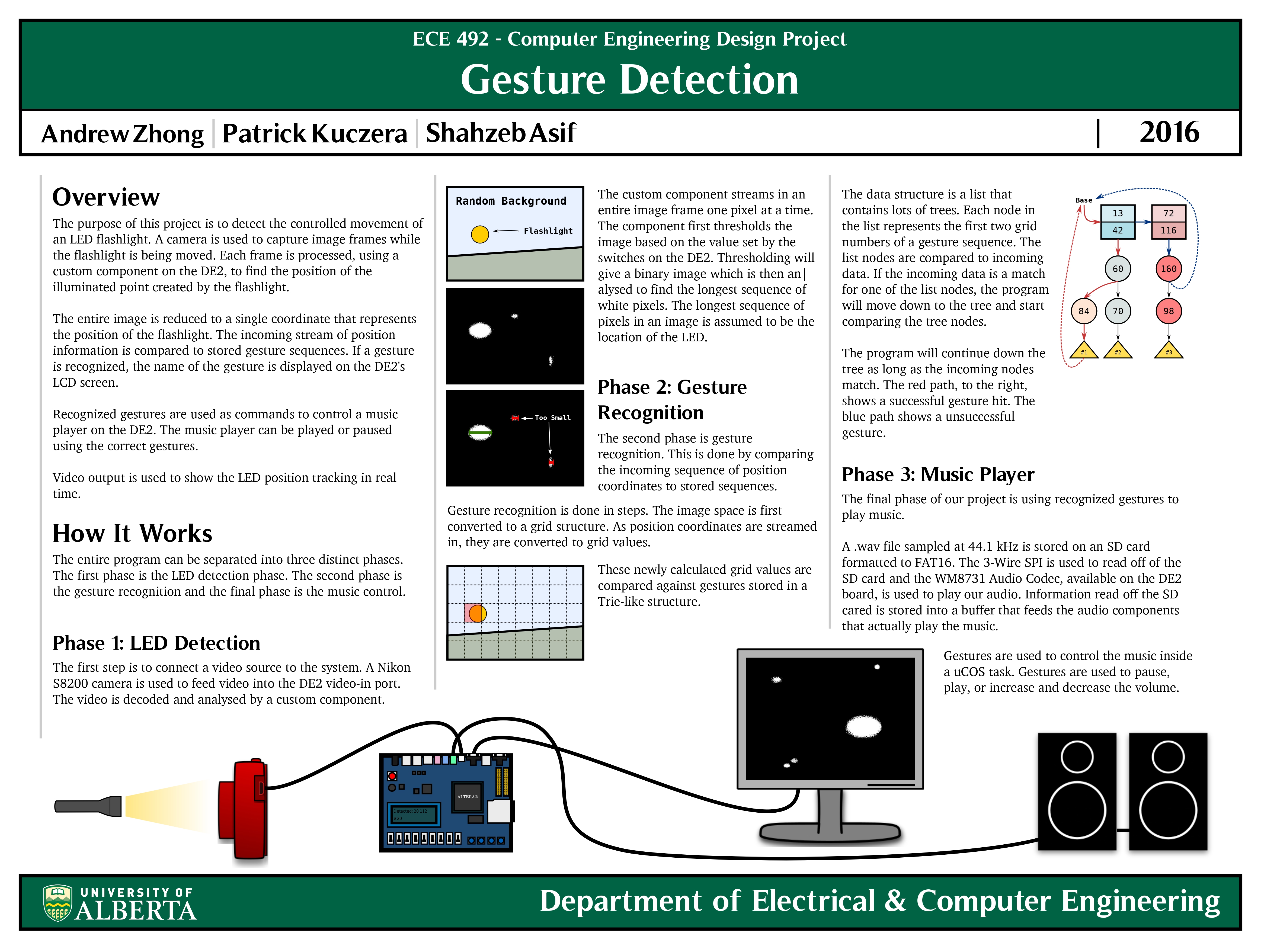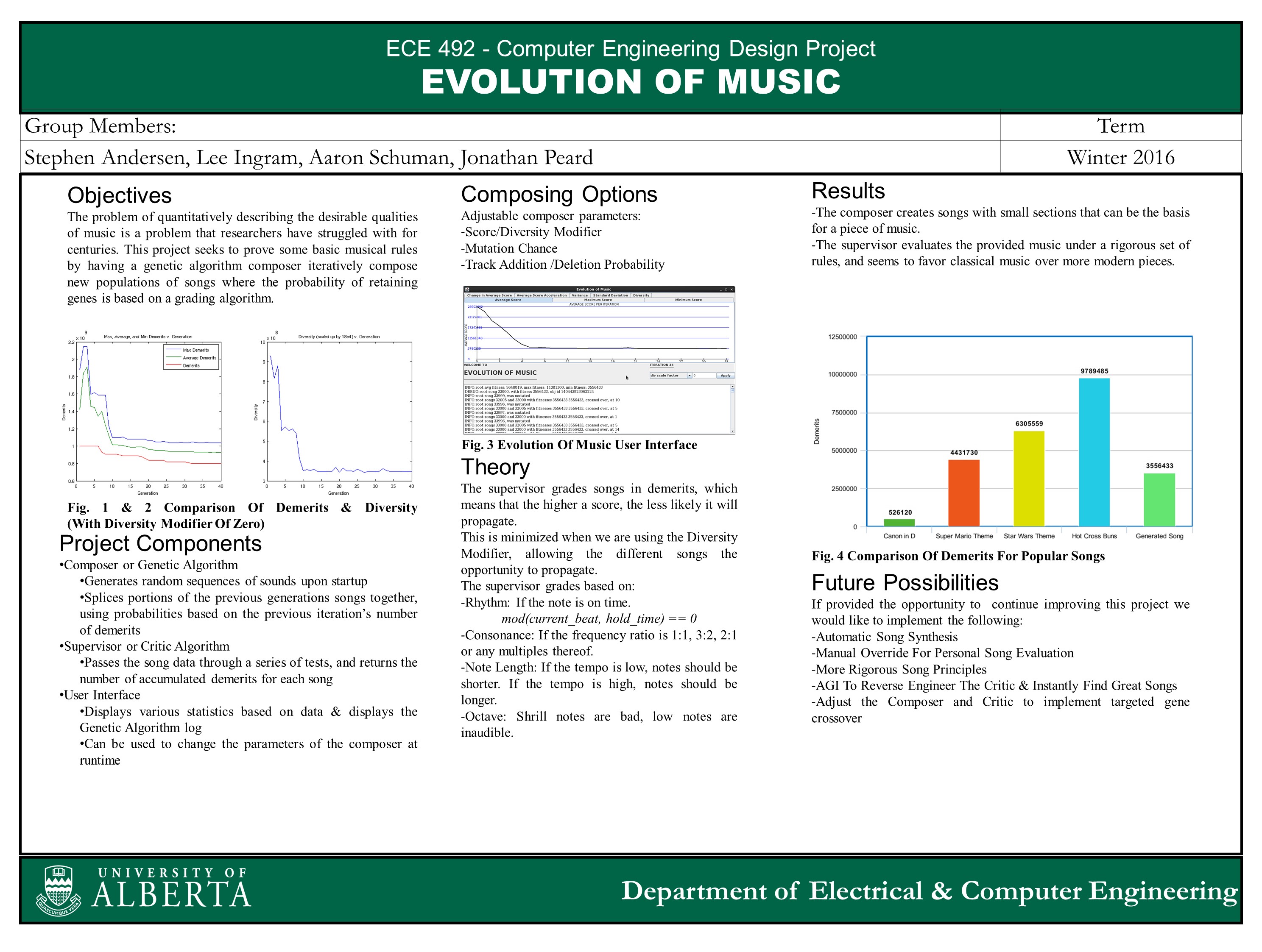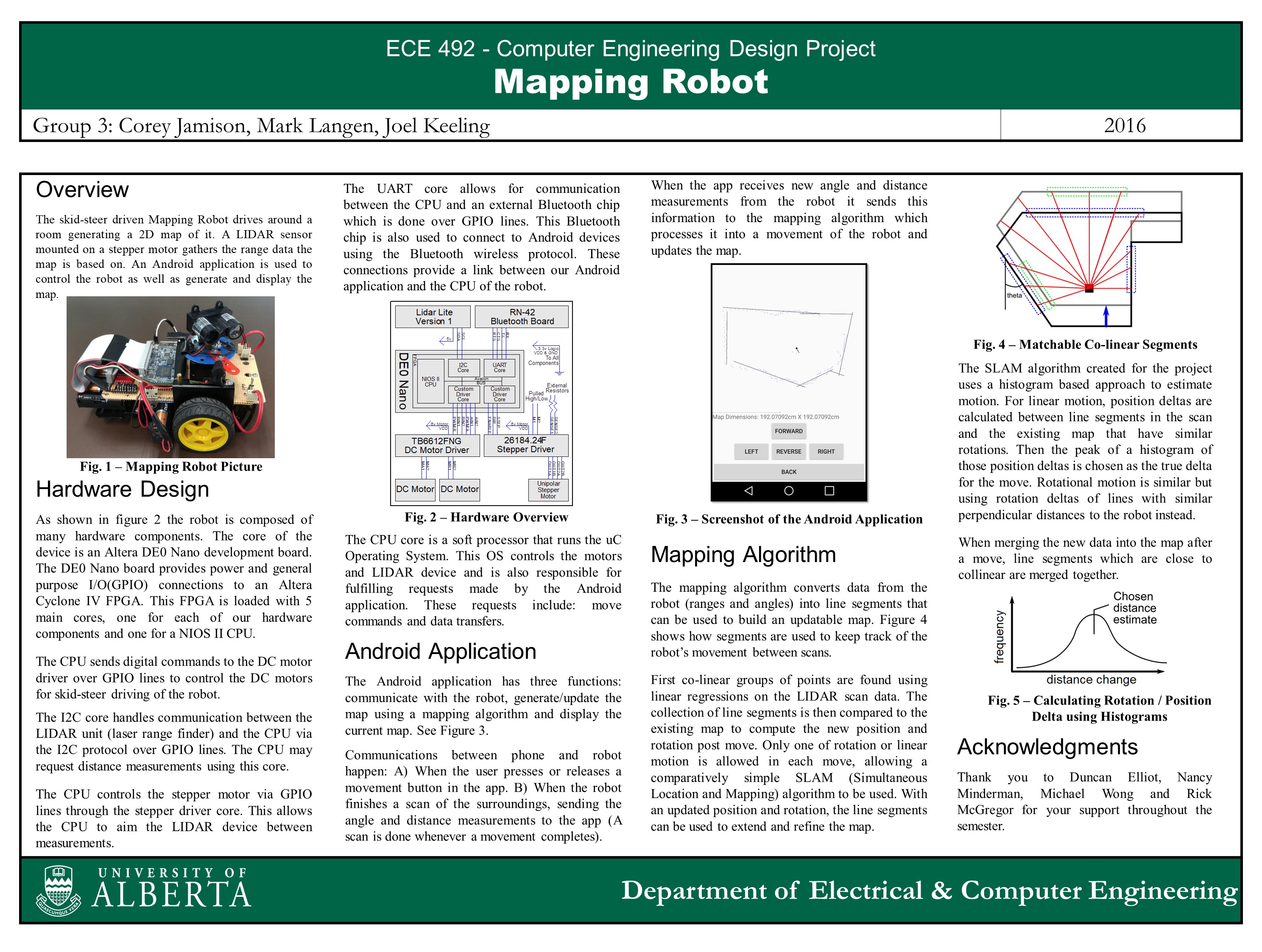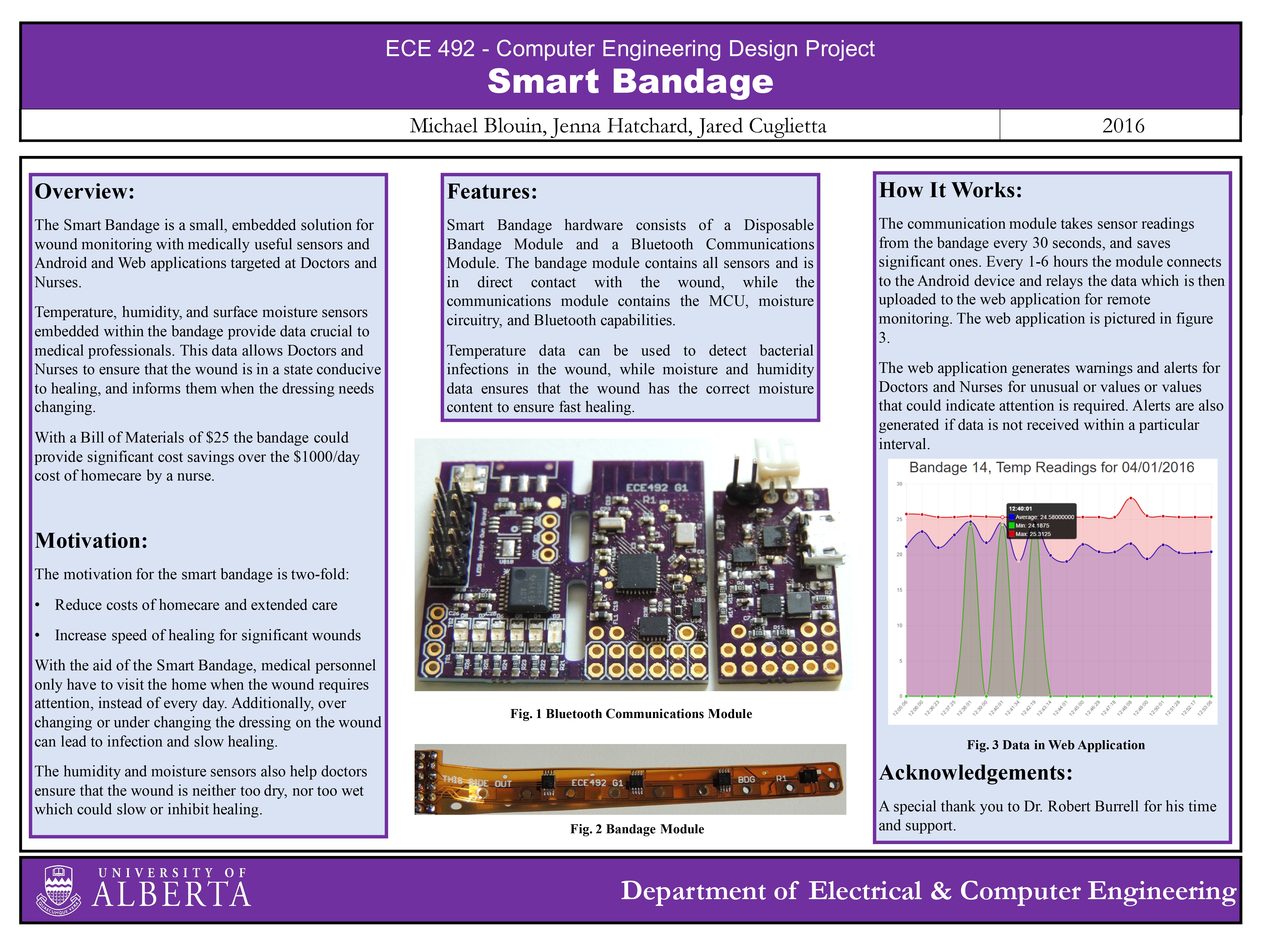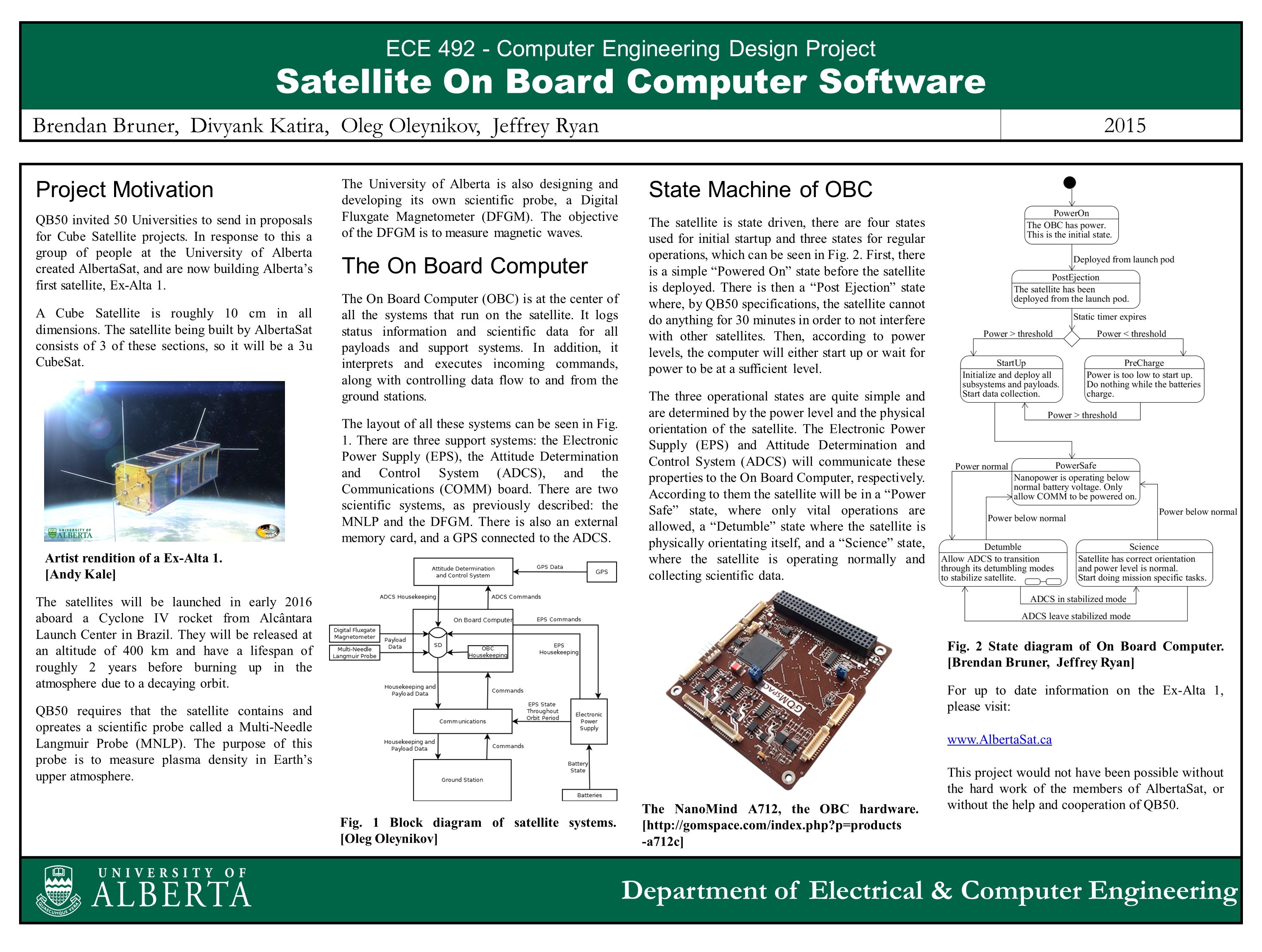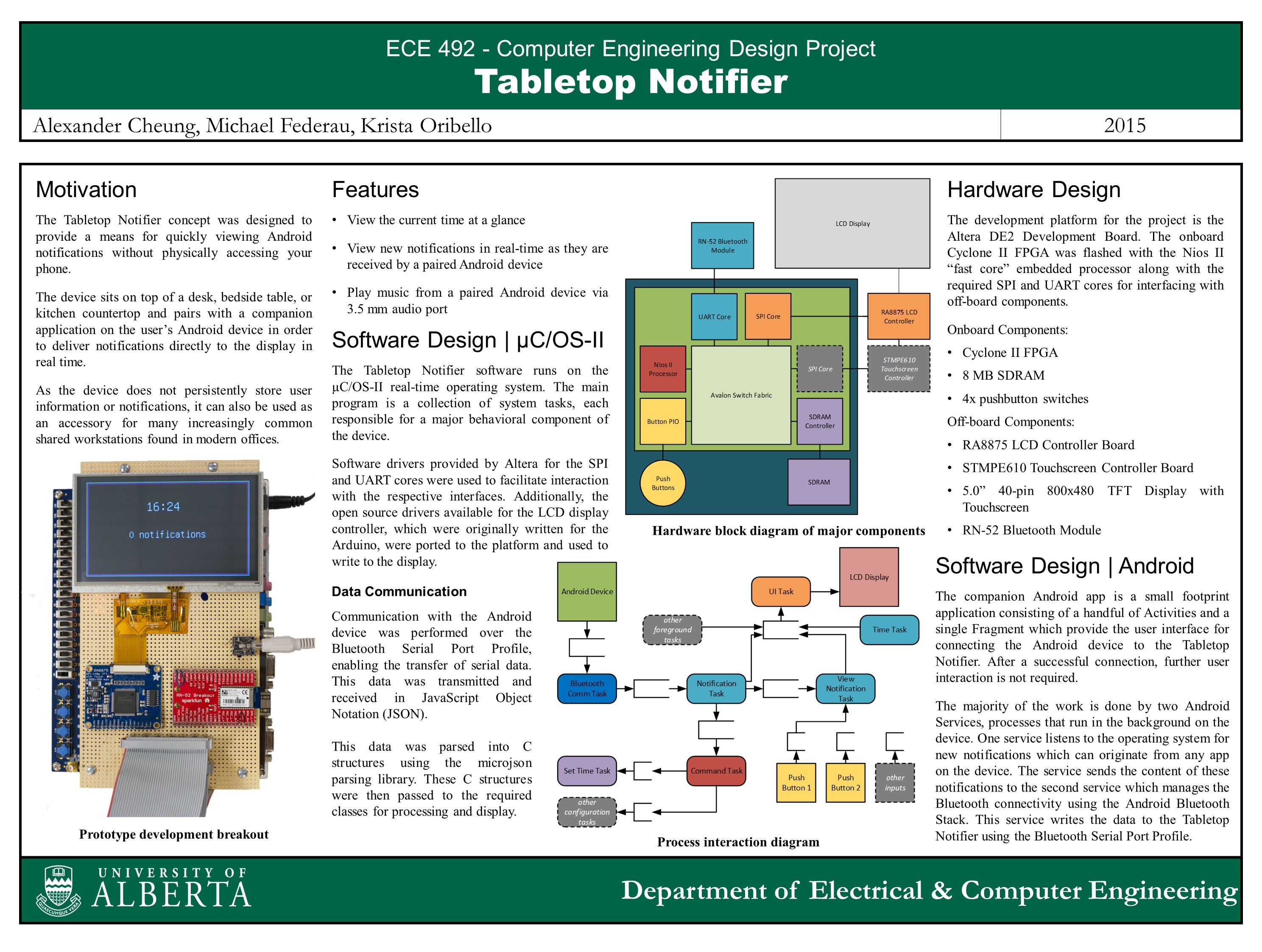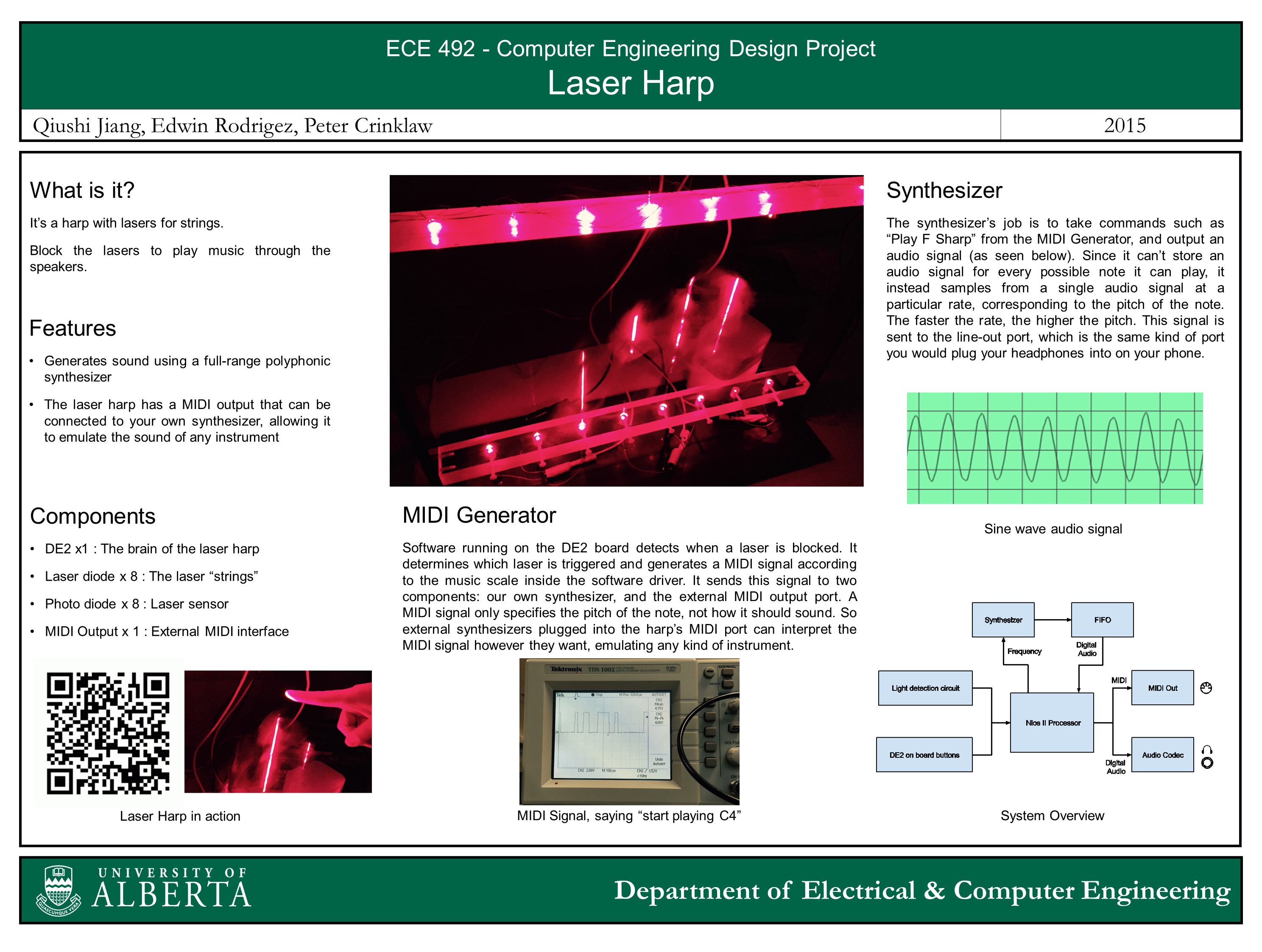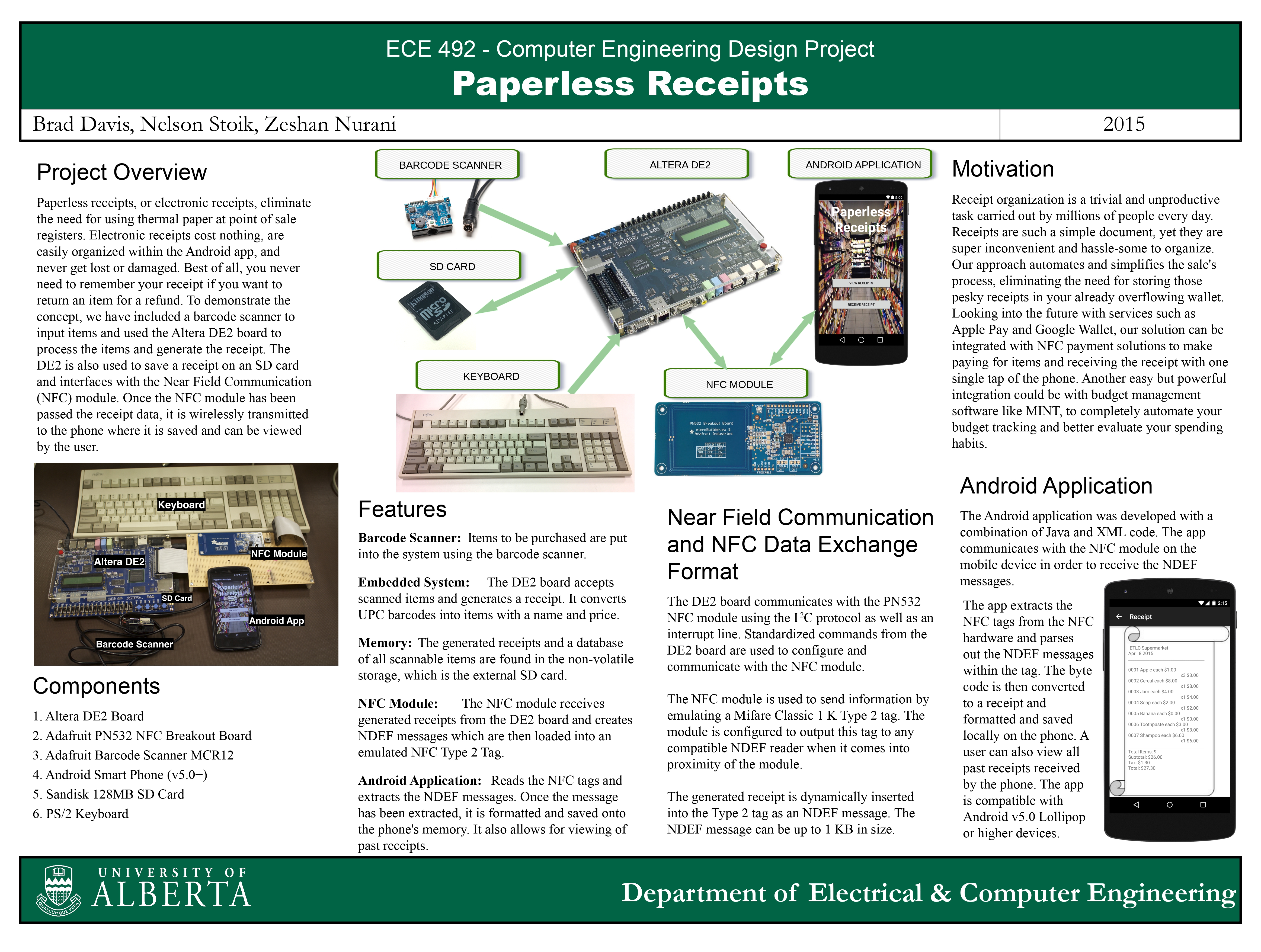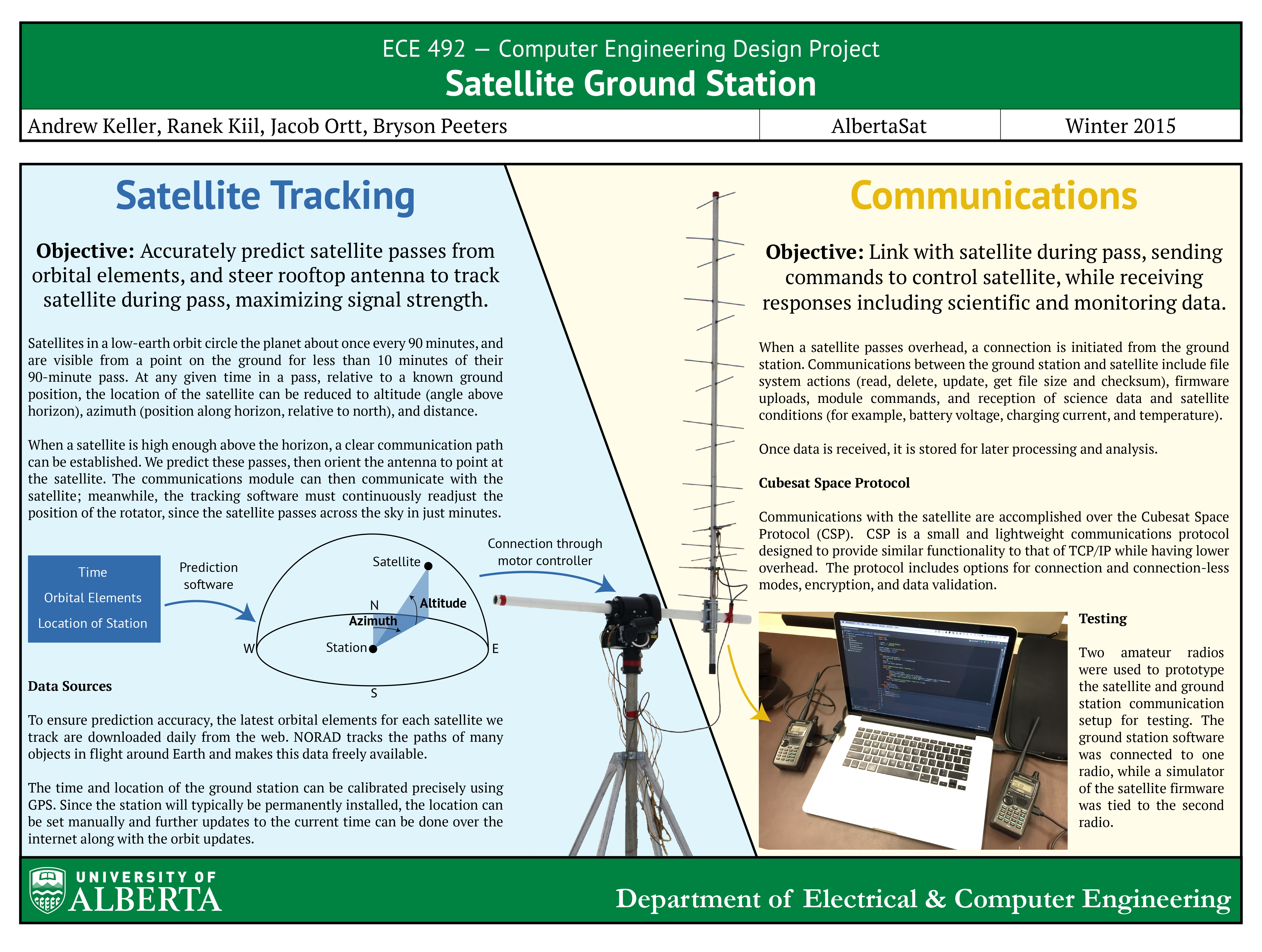Projects from the Department of Computer Engineering
Team Members: Stephen Just, Mason Strong, Stefan Martynkiw
To produce a comprehensive and performant graphics platform capable of outputting 640x480 video with a DE2 board. This video can have 256 on-screen colours and a maximum frame rate of 60fps. By providing several operations in hardware, our platform achieves significantly faster performance than could be achieved in software alone. The platform can be combined with other components to extend its capabilities
Discipline:Computer Engineering
Team Members: Andrew Zhong, Patrick Kuczera, Shahzeb Asif
The purpose of this project is to detect the controlled movement of an LED flashlight. A camera is used to capture image frames while the flashlight is being moved. Each frame is processed, using a custom component on the DE2, to find the position of the illuminated point created by the flashlight. The entire image is reduced to a single coordinate that represents the position of the flashlight. The incoming stream of position information is compared to stored gesture sequences. If a gesture is recognized, the name of the gesture is displayed on the DE2's LCD screen. Recognized gestures are used as commands to control a music player on the DE2. The music player can be played or paused using the correct gestures. Video output is used to show the LED position tracking in real time
Discipline:Computer Engineering
Team Members: Stephen Andersen, Lee Ingram, Aaron Schuman, Jonathan Peard
The problem of quantitatively describing the desirable qualities of music is a problem that researchers have struggled with for centuries. This project seeks to prove some basic musical rules by having a genetic algorithm composer iteratively compose new populations of songs where the probability of retaining genes is based on a grading algorithm.
Discipline:Computer Engineering
Team Members: Corey Jamison, Mark Langen, Joel Keeling
The skid-steer driven mapping robot drives around a room generating a 2D map of it. A LIDAR sensor mounted on a stepper motor gathers the range data the map is based on. An Android app is used to control the robot as well as generate and display the map.
Discipline:Computer Engineering
Team Members: Michael Bloin, Jenna Hatchard, Jared Cuglietta
The Smart Bandage is a small, embedded solution for wound monitoring with medically useful sensors and Android and Web applications targeted at Doctors and Nurses. Temperature, humidity, and surface moisture sensors embedded within the bandage provide data crucial to medical professionals. This data allows Doctors and Nurses to ensure that the wound is in a state conducive to healing, and informs them when the dressing needs changing. With a Bill of Materials of $25 the bandage could provide significant cost savings over the $1000/day cost of homecare by a nurse.
Discipline:Computer Engineering
Team Members: Brendan Bruner, Divyank Katira, Oleg Oleynikov, Jeffrery Ryan
QB50 invited 50 Universities to send in proposals for Cube Satellite projects. In response to this a group of people at the University of Alberta created AlbertaSat, and are now building Alberta’s first satellite, Ex-Alta 1. A Cube Satellite is roughly 10 cm in all dimensions. The satellite being built by AlbertaSat consists of 3 of these sections, so it will be a 3u CubeSat.
Discipline:Computer Engineering
Team Members: Alexander Cheung, Micheal Federau, Krista Oribello
The Tabletop Notifier concept was designed to provide a means for quickly viewing Android notifications without physically accessing your phone. The device sits on top of a desk, bedside table, or kitchen countertop and pairs with a companion application on the user’s Android device in order to deliver notifications directly to the display in real time. As the device does not persistently store user information or notifications, it can also be used as an accessory for many increasingly common shared workstations found in modern offices.
Discipline:Computer Engineering
Team Members: Qiushi Jiang, Edwin Rodrigez, Peter Crinklaw
It's a harp with lasers for strings. Block the lasers to play music through the speakers.
Discipline:Computer Engineering
Team Members: Brad Davis, Nelson Stoik, Zeshan Nurani
Paperless receipts, or electronic receipts, eliminate the need for using thermal paper at point of sale registers. Electronic receipts cost nothing, are easily organized within the Android app, and never get lost or damaged. Best of all, you never need to remember your receipt if you want to return an item for a refund. To demonstrate the concept, we have included a barcode scanner to input items and used the Altera DE2 board to process the items and generate the receipt. The DE2 is also used to save a receipt on an SD card and interfaces with the Near Field Communication (NFC) module. Once the NFC module has been passed the receipt data, it is wirelessly transmitted to the phone where it is saved and can be viewed by the user.
Discipline:Computer Engineering
Team Members: Andrew Keller, Ranek Kiil, Jacob Ortt, Bryson Peeters
Satellites in a low-earth orbit circle the planet about once every 90 minutes, and are visible from a point on the ground for less than 10 minutes of their 90-minute pass. At any given time in a pass, relative to a known ground position, the location of the satellite can be reduced to altitude (angle above horizon), azimuth (position along horizon, relative to north), and distance. When a satellite is high enough above the horizon, a clear communication path can be established. We predict these passes, then orient the antenna to point at the satellite. The communications module can then communicate with the satellite; meanwhile, the tracking software must continuously readjust the position of the rotator, since the satellite passes across the sky in just minutes
Discipline:Computer Engineering
Explore
Explore projects from other disciplines!

